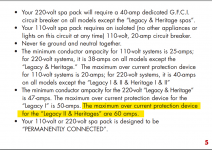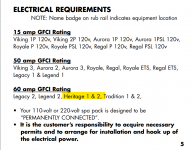In my opinion, we know for sure that the breaker and wire are undersized from the manual specifications that say to use a 60 amp breaker and the breaker is only 50 amps and the wire is only rated to 55 amps.
Replacing the wire and breaker should be done for no cost by the original electrician because it is their mistake, but they might not be available and the customer might not want the incompetent person to come back to do any work.
I would have the new electrician redo the wiring and breaker and send the bill to the original electrician.
Replacing the wire and breaker might fix the problem but it might not if there is a different issue.
A competent electrician should be able to accurately diagnose the problem and recommend a proper solution.
The undersized breaker and wire is not the electrician's fault. They went off the information that was given by the authorized dealer. The hot tub was not on site when they did the work. And this is not a case of me misunderstanding what was required because we were given paperwork to show the electrician. Paperwork that we later found out was outdated when we contacted Viking. Like I previously said, the dealer sent their installers with the hot tub and they inspected everything from the main panel out and saw no problems. Ideally, the dealer would be responsible for replacement but they went out of business within a year of us buying the hot tub, which was upsetting because we went through them because they had been in business forever and their customer service was top notch.
Still waiting on the electrician to make it out here. They were scheduled up and are going to work me in between jobs.





